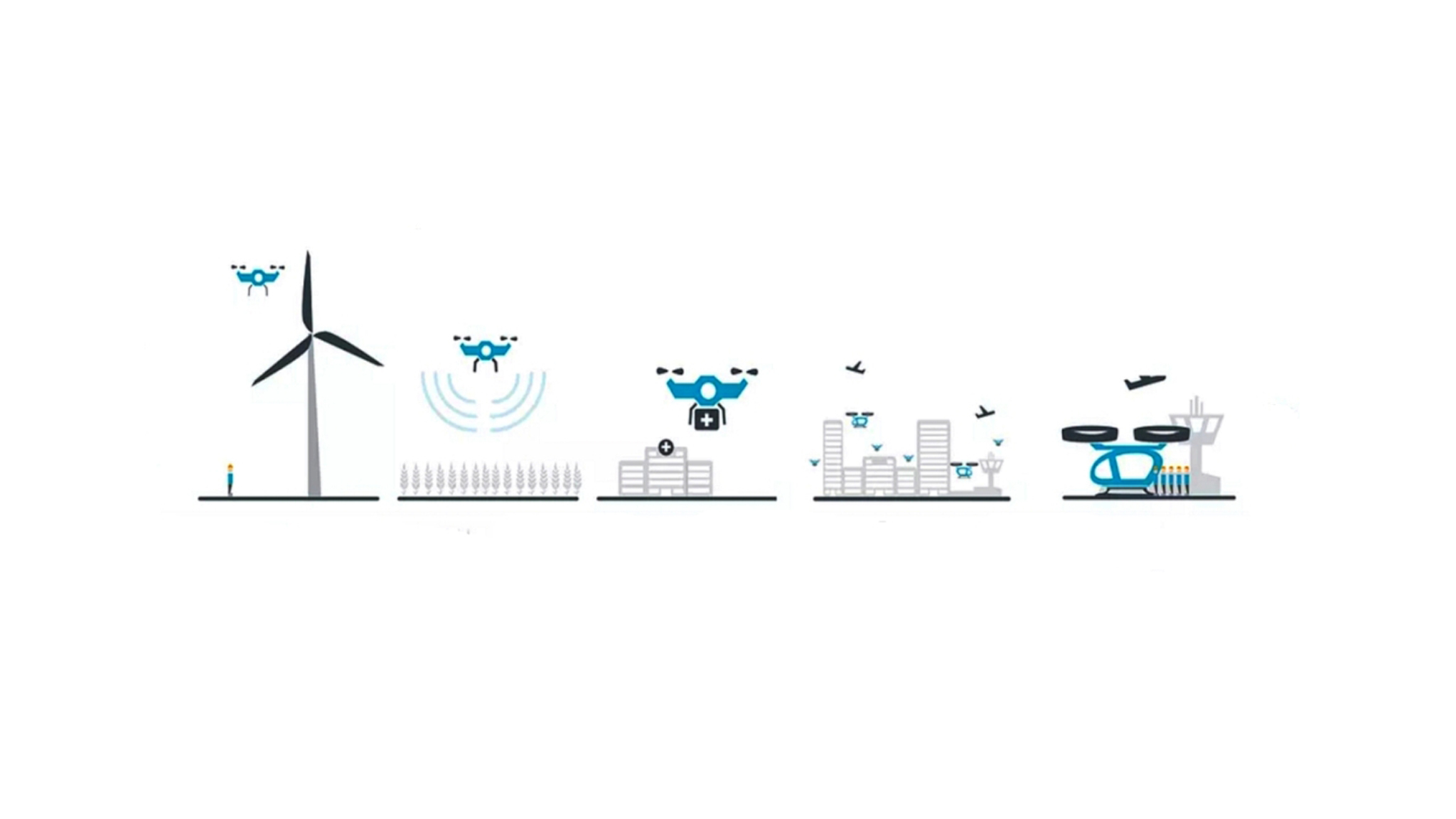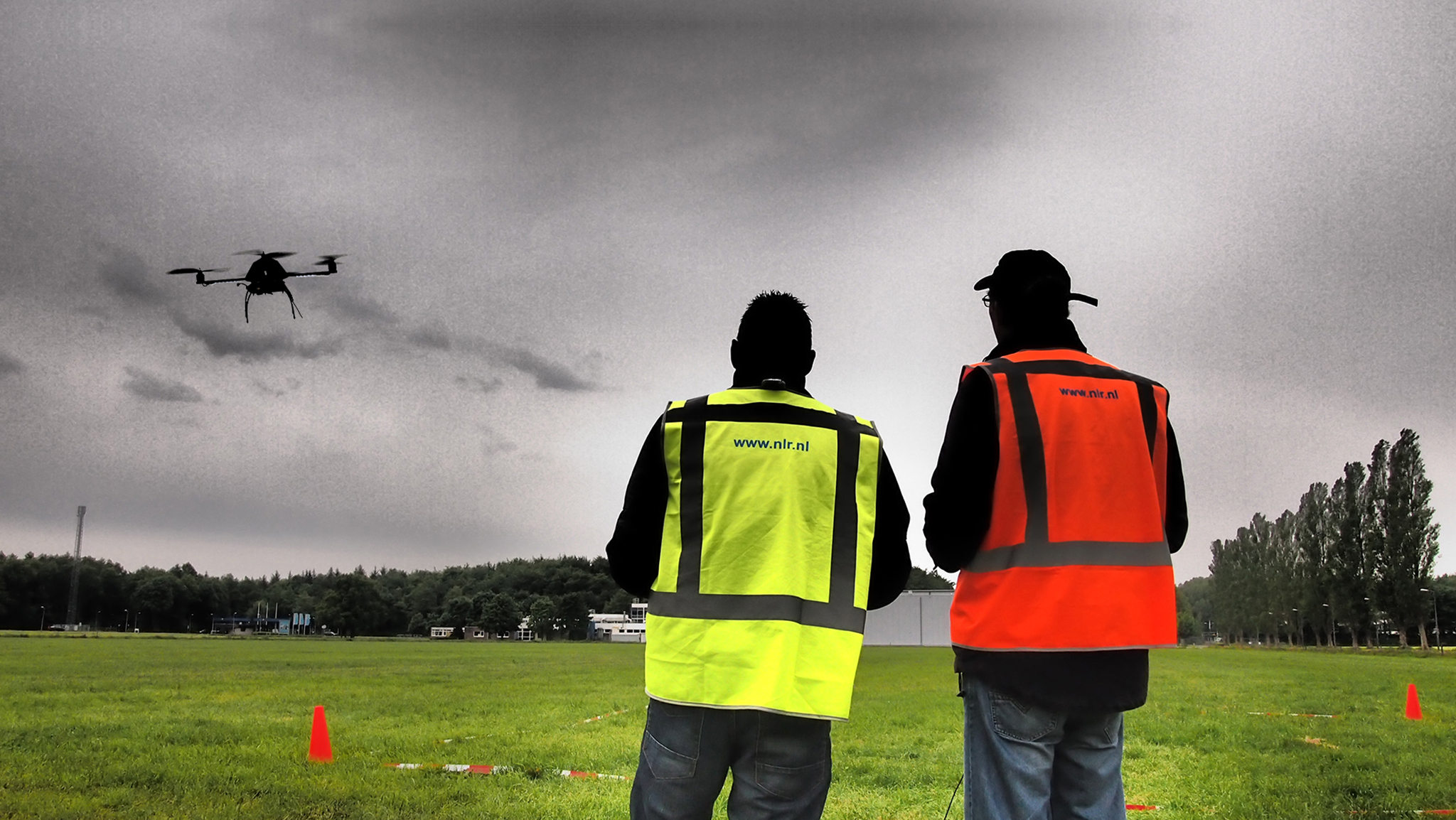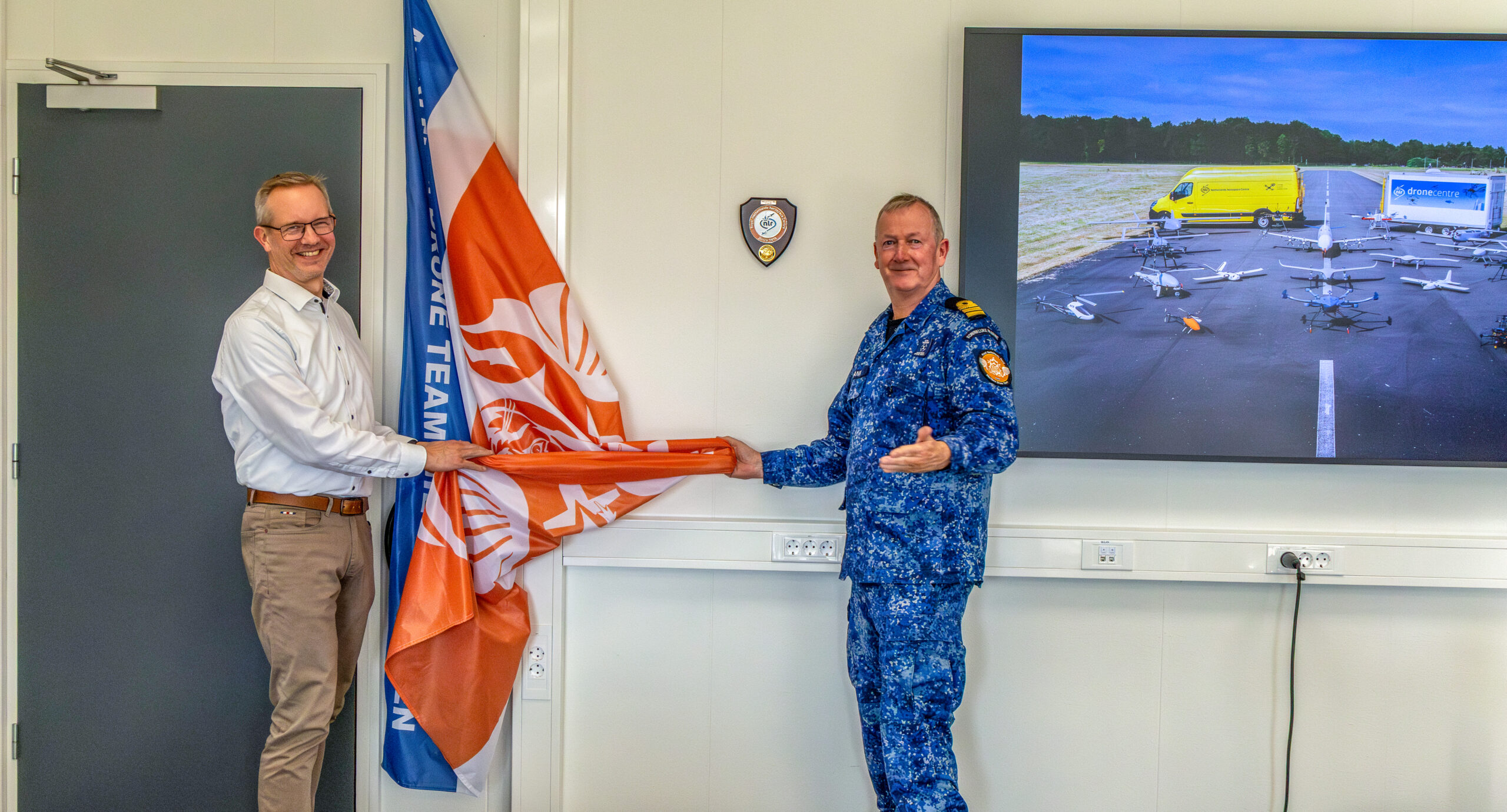Large-scale simulation of airspace integration procedures
The first phase of this project culminated in May 2019 during which a large-scale simulation exercise was performed at the Amsterdam campus of NLR. The exercise considered operations from Rotterdam The Hague Airport, a civil airport in the Netherlands. The goal of this exercise was to test the first version of the MALE RPAS airspace integration procedures, and involved experienced civil Air Traffic Controllers (ATCOs), as well as licensed airliner and RPAS pilots. To enable this study, NLR has developed the MALE RPAS Real-Time Simulation Facility (MRRF). The MRRF consists of two components: the NLR ATM Research Simulator (NARSIM), which simulates air traffic and provides working positions for ATCOs and aircraft pilots; and the NLR Multi UAS Supervision Testbed (MUST), which functions as the RPAS simulator and the pilot ground control station.
“In the first study we iteratively developed the procedures needed to operate MALE RPAS in Europe based on empirical evidence gathered from a series of real-time simulation exercises”, said Dr. ir. Emmanuel Sunil, R&D engineer and project manager at Royal NLR. “During the simulations performed in May, we subjected ATCOs to many contingency procedures ranging from engine failure to loss of C2 Link between the pilot and the RPAS. The results indicate that the new procedures that we are developing will make it possible for MALE RPAS to fly safely and efficiently in civil European airspace along with other manned air traffic.”
Keeping a safe distance
The second phase of the study will further develop the MALE RPAS airspace integration procedures by considering operations with Detect and Avoid (DAA) and Traffic alert and Collision Avoidance System (TCAS II). DAA and TCAS make it possible for the RPAS pilot to remain well clear of both cooperative and non-cooperative aircraft, as well as avoid collisions should the other layers of conflict management fail. In this study, a MRRF upgrade will incorporate the GA-ASI Conflict Prediction and Display System (CPDS) that integrates DAA and TCAS functionality, designed to meet the published [SB1] RTCA requirements for these technologies. Testing of the developed procedures will take place at a second simulation exercise in the latter half of 2020, and the corresponding results made available to the public by the end of 2020.
Watch the video of the first study
For more information:
Dr. ir. Emmanuel Sunil
R&D engineer and project manager at Royal NLR
Emmanuel.Sunil@nlr.nl



